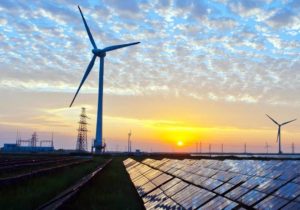World Bank inks $200m renewable energy pact with Himachal
 New Delhi : The Government of India, the Government of Himachal Pradesh and the World Bank has signed a $200 million project that will push power sector reforms in Himachal Pradesh and increase the share of renewable energy (RE) in the state’s electricity generation.
New Delhi : The Government of India, the Government of Himachal Pradesh and the World Bank has signed a $200 million project that will push power sector reforms in Himachal Pradesh and increase the share of renewable energy (RE) in the state’s electricity generation.
This will contribute to the state’s overall aim of adding 10,000 megawatts (10 gigawatts) of additional RE capacity to make the state’s power supply greener, a World Bank release claimed today.
Himachal Pradesh aims to become a ‘Green State’ by meeting 100 percent of its energy needs through renewable and green energy by 2030. The state currently meets more than 80 percent of its energy demands from hydropower.
The World Bank’s Himachal Pradesh Power Sector Development Program will help the state enhance the utilization of its existing RE resources, including hydropower, and help to diversify its RE resources further.
For instance, it will add 150 megawatts of solar capacity in the state, reducing greenhouse gas emissions by more than 190,000 metric tons per year.
The agreement was signed today by K Manicka Raj, Joint Secretary, Department of Economic Affairs, Ministry of Finance on behalf of the Government of India; Harikesh Meena, Director (Energy), on behalf of the Government of Himachal Pradesh; and Auguste Tano Kouame, Country Director, India on behalf of the World Bank.
“The Program will boost local economic activity while replacing fossil-fuel based energy consumption with green energy,” said Auguste Tano Kouamé, the World Bank’s Country Director for India. “Moreover, the Program will support HP to set up a single energy trading desk, thus enabling the sale of surplus hydropower to other states.”
The World Bank press rekease said more importantly, the Program will provide a template for the Indian power market for underwriting new investments in renewable energy.
In Himachal’s hilly terrain where challenges in maintaining uninterrupted power supply are higher – and restoration in case of a breakdown may take longer than elsewhere – the Program will help achieve a strengthened transmission and distribution grid.
It will introduce advanced technologies such as a demand response management system and seamless access to RE. This is critical during peak load periods when the state must otherwise rely on expensive fossil-fuel based power. The introduction of automated systems will be an important step towards providing clean, reliable 24×7 power supply to citizens, reduce power outages, and minimize consumer complaints.
The Program will help strengthen environmental, social, financial management, corporate governance, and procurement capabilities of the state’s power sector utilities and agencies.
In addition, it will contribute towards creating job opportunities in specialized technical and managerial fields in the sector, especially for women. HP power utilities will train around 700 female apprentices throughout the lifespan of the program, giving them hands-on exposure and training in technical roles within the power sector.
This will build on the National Apprentice Promotion Scheme implemented by the Ministry of Skill Development and Entrepreneurship.
“The Program will promote good and sustainable practices within the power utilities in the state to transition them to run a green and low carbon electricity system,” said Surbhi Goyal and Pyush Dogra, team leaders for the Program. “This shall contribute towards the state’s goal to be one of the first ‘Green State’ in the country.”
The $200 million loan from the International Bank for Reconstruction and Development (IBRD) has a final maturity of 14.5 years including a grace period of 4.5 years the World Bank press release said.
